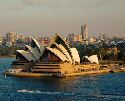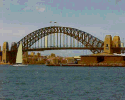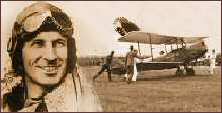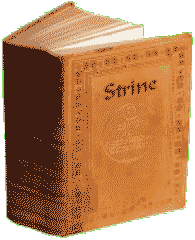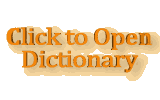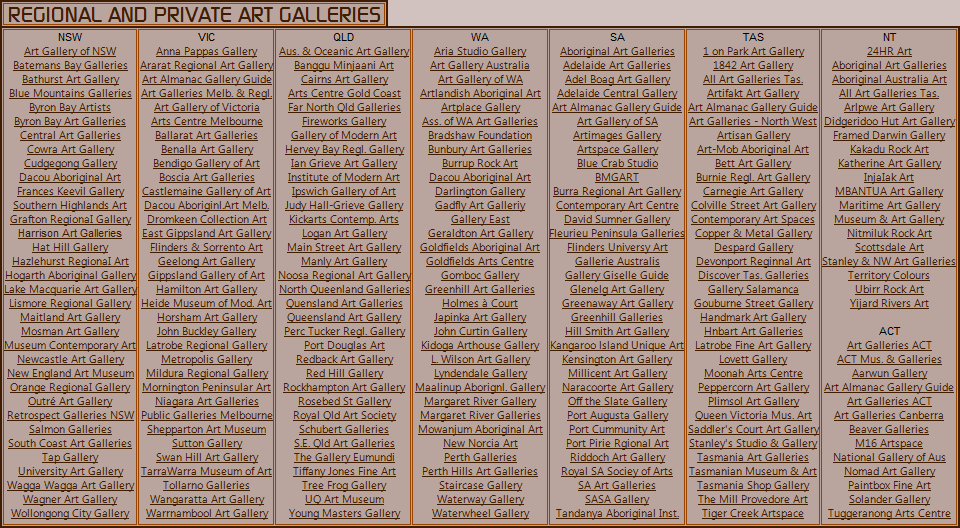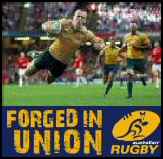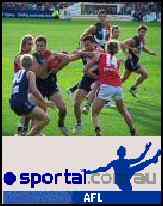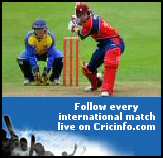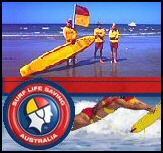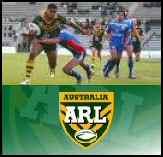Sydney Opera House, Master Foods, beer, prawns, shrimp, lobster, Waltzing Matilda, barbecues, equitable, society, live in cities on the coast, Aboriginal culture, Sydney Harbour Bridge, laid, back, lifestyle. Australian behavior, friendly, egalitarian, wealthy, poor, fair go, uneducated, wise, tall, poppy, syndrome, uncouth, unsophisticated, blunt, kowtowing, class system, British culture, visitor, mate, posh, school, Australian culture. Pub, round, shout, paying, dinner, money, pocket, marry, blokes, contact, bond, mateship, Europeans, arrived, close, bonding, racist, jokes, taking the piss, poms, English, foreigner, taxi, driver, tip, sit, front, passenger, seat, chat, barbecue, empty, handed, alcoholic, drink, men, culture,don't, cry, she'll be right mate, right mate.
Australian heroes, Andrew Barton Banjo Paterson, Don Bradman, Phar Lap, Ned Kelly, Mathew Flinders, Evonne Fay Goolagong Cawley, Charles Edward Kingsford-Smith, Nancy Bird, Dawn Fraser, Captain James Cook. Resources, venues, events, art, culture, activities, dance, festival, film, food, drink, literature, other, religion, Sport. Private Art galleries, regional, culture, music, Australian, records, facts, urbanized, land use, gambling, sixth, largest, nation, driest, continent, second lowest population density, largest island, smallest, continent, largest, exporter, black coal, aluminium, bauxite, sheep, diamonds, gems, industrial, refined zinc, lead, mineral, sands, wool, famous, Australians.
Largest, longest, reef, highest, rainfall, Foggiest, coldest, night, temperature, largest, lake, lowest, point, rainfall, consumed, vegetables, egg, consumption, cheese, eaten, culture, life, expectancy, eight, hour, day, largest, tram, last, meat, consumption, longest, river, dingo, fence, deepest, lake, highest, point, largest, island, in australia, hottest.
Australian, style, inventions, stobie, pole, coolgardie safe, buffalo, fly, trap, kerosene, refrigerator, electric, shearing, machine, culture, chiko, roll, dual, flush, toilet, lamington, vegemite, super, sopper, life, saving, reel, staysharp, knife, pavlova.
Tasmanian, Aboriginals, Hobbit, Flores, Mungo, Man, Queensland, pygmy, Kow. Swamp, skeletons, Homo, erectus, spear, buried, years, ago, culture. scientists, Africa, bearded, creature, dna, modern, humans, Homo sapiens.
Rugby union, surf, life, saving, rod, laver, Australian, Football, League, rules, AFL, cricket, rugby league, America's, cup, motor, sport, culture, formula, one, grand, prix, casey, stoner, wayne, gardner, jack, brabham, mike, doohan, alan, jones, Olympic, gold, medals, tennis, grand, slams.
Australian, firsts, tote, totalisator, first, ski, club, g'day, polocrosse, freestyle, winged, keel, race, gidday, cam, Australian, crawl, strine, language, australian culture.
Strine the language of Australians
Regional and Private Art Galleries
Mungo Man
Megafauna
Megafauna

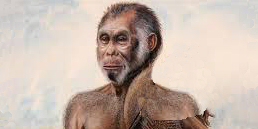
Super Sopper
The super sopper soaks up excess water from mainly cricket pitches, but from all sports grounds, and was invented in 1974 by Gordon Withnall.
The super sopper soaks up excess water from mainly cricket pitches, but from all sports grounds, and was invented in 1974 by Gordon Withnall.
Life Saving Reel
This reel used on beaches to save stranded swimmers was made and used in 1906 at Bondi Beach by Lyster Ormsby.
This reel used on beaches to save stranded swimmers was made and used in 1906 at Bondi Beach by Lyster Ormsby.
Vegemite
A spread was made from yeast by Dr Cyril Callister in 1923. It was superier to Marmite said the British Medical Journal.
A spread was made from yeast by Dr Cyril Callister in 1923. It was superier to Marmite said the British Medical Journal.
Staysharp Knife
The knife that is resharpened when it is put back in its scabbard was invented in 1964 (perfected 1970) by Dennis Jackson.
The knife that is resharpened when it is put back in its scabbard was invented in 1964 (perfected 1970) by Dennis Jackson.
Lamington
This cake was made in the Queensland Government House Kitchen from sponge and coconut and named after the Governors wife Lady Lamington in 1895. The desert did not have a name until that time.
This cake was made in the Queensland Government House Kitchen from sponge and coconut and named after the Governors wife Lady Lamington in 1895. The desert did not have a name until that time.
Pavlova
New Zealand claims the Pavlova, but Anna Pavlova visited Australia in 1925 and it wasn 't until 1935 that Mrs. Elizabeth Paxton sold the first strawberry and whipped cream desert called Pavlova at her hotel in Western Australia where the Russian ballerina stayed in 1929.
New Zealand claims the Pavlova, but Anna Pavlova visited Australia in 1925 and it wasn 't until 1935 that Mrs. Elizabeth Paxton sold the first strawberry and whipped cream desert called Pavlova at her hotel in Western Australia where the Russian ballerina stayed in 1929.
Chiko Roll
Francis Gerald McEncroe of Bendigo was "messing around" in his kitchen trying to create something that would stand up to long distance travel for his catering company. He came up with a fry-up" of vegetables wrapped in firm but soft pastry and called it Chiko Roll.
Francis Gerald McEncroe of Bendigo was "messing around" in his kitchen trying to create something that would stand up to long distance travel for his catering company. He came up with a fry-up" of vegetables wrapped in firm but soft pastry and called it Chiko Roll.
Meat Pie
The Four'N Twenty meat pie was created in 1947 by L. T McClure in a Bendigo bakery. It was accepted as the real Aussie pie.
The Four'N Twenty meat pie was created in 1947 by L. T McClure in a Bendigo bakery. It was accepted as the real Aussie pie.
Electric Shearing Machine
This machine cut more wool than handshears. A working electric handshearer was made by Frederick York Wolseley in 1887.
This machine cut more wool than handshears. A working electric handshearer was made by Frederick York Wolseley in 1887.
Dual Flush Toilet
To save water Bruce Thompson of Caroma invented the dual flush toilet in 1980.
To save water Bruce Thompson of Caroma invented the dual flush toilet in 1980.
Buffalo Fly Trap
Cows readily use this walk-though tent which cleans and collects buffalo flies from their bodies.
Cows readily use this walk-though tent which cleans and collects buffalo flies from their bodies.
Stobie Pole
Wood was scarce so this pole was made in 1924 by sandwiching concrete between two pieces of steel.
Wood was scarce so this pole was made in 1924 by sandwiching concrete between two pieces of steel.
Kerosene Refrigerator
This real food cooling refrigerator was developed by Edward Hallstrom of Sydney in 1923.
This real food cooling refrigerator was developed by Edward Hallstrom of Sydney in 1923.
Coolgardie Safe
Ideal for Third World countries this device to store food was invented in the 1880s. It consists of an open mesh box covered with hessian and contains a water tray which allows water to evaporate.
Ideal for Third World countries this device to store food was invented in the 1880s. It consists of an open mesh box covered with hessian and contains a water tray which allows water to evaporate.
AUSTRALIAN CULTURE

Foggiest
Canberra is the foggiest capital.
Coldest Ovenight Temperature - city and region
The town with the lowest night temperature is Canberra, with Charlotte Pass having the lowest recorded temperature.
Highest Rainfall
Tully in Queensland has the highest rainfall in a year at 4400mm.
Lowest Rainfall and Lowest Point
Lake Eyre SA has lowest rainfall and is the lowest region.
Trams - largest, last
The largest tram network runs in Melbourne and it is also the world's last publicly operated tram system.
Vegetable consumed
Only 4 percent of Australians eat enough vegetables.
.
Cheese Eaten
Each Australian eats half a tonne of cheese in a lifetime.
Fruit Consumption
Only half recommended amount of fruit is eaten.
Longest and Largest Reef
The Barrier Reef is the longest and largest reef in the world.
Largest Exporter
Australia is the world's largest exporter of Aluminium (bauxite), Black Coal, Diamonds (gem plus industrial) , Lead, Mineral Sands, Refined Zinc, Sheep and Wool.
Second Lowest Population Density
The Population is 6.4 people per square mile, second after Mogolia 4.3.
Smallest Continent
Of all continents, Australia is the smallest.
Largest island
The Australian mainland is technically the largest island.
Driest Continent
Australia is the driest inhabited country.
Sixth Largest Nation
Australia is the 6th largest country after Russia, Canada, China, the
United States and Brazil,
Land Use
Though mining is an important export industry, more Australian land is used for
pubs than mining.
Gambling
Australians gamble more per head than anywhere else, having a fifth of the
world's poker machines.
Urbanized
This country is the most urbanized on Earth with 70 percent of the
population living in coastal cities.
This country is the most urbanized on Earth with 70 percent of the
population living in coastal cities.
Meat Consumed
Australians eat more meat than other nationalities.
Egg Consumption
During a lifetime an Australian will eat 165,000 eggs.
Life Expectancy
Australian Men live to 81 years on average, women 84.8 years.
Eight-hour Day
Melbourne stonemasons gained the first 8 hour day in 1856.
Dingo Fence
The world's longest fence built to stop dingoes is twice as long as the Great Wall of China.
Longest River
The longest river in Australia is the Murray River 2520kms long.
Deepest Lake
Lake St Clair is the deepest in Australia.
Largest Lake
Australia's largest natural body of water is Lake Eyre, 9500 square kms.
Hottest
Cloncurry in Queensland recorded the hottest temperature in Australia, 53 degrees Centigrade.
Highest Point
The highest peak on the Australian mainland is Mount Kosciusko NSW, 2230 m.
Largest Island in Australia
Tasmania is the largest island in Australia.
Tasmania is the largest island in Australia.

Tysaustralia



Australia's Cultural Development

STATE ART GALLERIES
| NEW SOUTH WALES Art Gallery of NSW, Sydney |
VICTORIA National Gallery of Vic., Melbourne |
QUEENSLAND Queensland Art Gallery, Brisbane |
SOUTH AUSTRALIA Art Gallery of SA Adelaide |
| TASMANIA australian culture. Tas Museum & Art Gallery, Hobart |
WESTERN AUSTRALIA culture. Art Gallery of WA, Perth |
NORTHERN TERRITORY Museum & Art Gallery N T, Darwin |
ACT National Gallery of Australia Canberra |
MULTICULTURAL EVENTS & GROUPS
| NSW Multi-cultural groups in Sydney and New South Wales. |
South Australia Multi-cultural performers provide enjoyable entertainment. |
Tasmania The Multi-cultural Council of Tasmania list of upcoming events. |
| Victoria This state celebrates racial, cultural and religious diversity. |
Western Australia Community happening of the Office of Multicultural Interests. |
Northern Territory Ethnicity and multiculturalism in the Northern Territory. |
| Queensland Calendar of events by the Queensland Multicultural centre. |
ACT Ethnic activities put on by the Multicultural body of the ACT.. |
AUSTRALIAN RECORDS AND FACTS

AUSTRALIAN STYLE INVENTIONS




If you would like to find out more, please go
to HOME PAGE for more information.
<<< Mobile page



Australians love prawns, an ideal seafood. What people in other countries call a shrimp is a prawn in this country. Another issue is a lobster. To Australians this delicacy is a crayfish. A young girl in Australia is called a "Sheila". But dancing with a young girl is not Waltzing Matilda: during the Depression a "Swagman" would carry his belongings in a bag called "Matilda", over his shoulder, on a stick, as he made his way across the land seeking employment. This was called "Waltzing Matilda". It is the essence of Australian Culture.
Though Australia is a Western coontry, things are different than in New York or London. Barbecues and going to the beach are important aspects of life. Australians pride themselves on having an equitable society, where everyone "gets a fair go". The majority of Australians live in cities along the coast, but cultural values originating in the outback are important to them. They look with affection to life as it was two hundred years ago when life was hard and a person's character was judged by his actions. Aboriginal culture is important to Australians. The original Australians have been on this continent for 50,000 years. Their laid-back attitude to life has infused present day Australian culture. Possibly the "she'll be right mate" attitude of Australians came from them.
This country prides itself on having a multicultural society where people from many countries can express their culture while adopting more widely held values. Consequently. many lifestyles and cuisines can be enjoyed. A quarter of Australians were born overseas. Post War immigrants came from Europe. Today, most immigrants come from China, the Middle East and to a lesser extent Africa. ]ust over 2 per cent of the population is Aboriginal.
After Captain Cook "discovered" Australia it became a colony of Britain. People from the United Kingdom were brought here to settle. Very soon, however, Australia became a destination for convicts, i.e., petty criminals from the UK. By the late 19th century more than half the population were convicts or freed convicts. One in five Australians living today has a convict ancestor. Rum was used as currency in the early days. People did drink rum though rather than tea. The flrst police force formed was made up of ex·convlcts. Gold was found all across Australla. Migrants came from European countries, other British colonies and the US to dig the gold. There was a large influx of Chinese who returned home en mass when the easy gold became scarce.
IMMIGRATION
Calling someone a bloody idiot is not an insult for an Australian. It is a fom of encouragement and shows a friendly feeling toward another. It is a norm of Australian culture. Egalitarianism is the prime cultural directive. Everyone must have a fair go whether they be wealthy or poor, old or young, uneducated or wise. In fact, a person who shows off his wealth is not respected. The tall poppy syndrome predominates - if they stand out above everyone else cut them down to size. Such is Australian culture. To people from other countries Australians can seem to be uncouth and unsophisticated. Being blunt and to the point is the way they live. Why hide things away? lf you see something tell it how it is. "Kowtowing" to others is not a thing Australians do. They do not like class systems like in British culture for example. Don't get me wrong here. They love the British, not British society, however. A visitor with a title will probably be called "mate", just like everyone else. Going to a "posh" school is meaningless to an Australian.
If you are in a pub you will be expected to buy a round, of beer. You will be told it is your "shout". Woe betide the man who tries to avoid paying for beer when it is his turn. When Australians go out to dinner everyone pays for his or her part of the bill. This happens even though some have more money in their pockets than others.
When Australians marry they still keep contact with their single group. Thus mateship continues throughout Australian cultural life. Australians rely on mates in times of need. Times were hard when Europeans first arrived and you needed close bonding in order to survive. Australians don't like racist jokes. They think someone who tells such jokes is "taking the piss". Jokes about the "Poms", the English, are allowed, however, because they are better than everyone else, aren't they? Besides Poms always have a smart reply. Australians will tell an "ethnic" joke directly to a visitor, whether the foreigner understands it or not. if you travel to Australia on vacation don't bother to tip. Even taxi drivers will rumble around to fnd 5 cents in change. And don't sit in the back of the car. Australian culture dictates that you sit in the passenger seat next to the taxi driver for a chat. When invited to a barbecue don't go empty handed. You are expected to bring alcoholic drink even if you drink someone else's. Furthemiore, men don't cry. At least Australian men don't. Life is hard but "she'll be right" in the long run. Oh, and don't think Australians will fight your fight. You solve your own problems here - ain't that right mate?
AUSTRALIAN BEHAVIOR
Ned Kelly The bushranger of Irish Descent has been made into a hero. Like Billy the Kid of America his real life consisted of stealing from others and making a nuisance of himself. At the age of 14 he announced he would be a bushranger. After killing three policemen he was hunted duwn and eventually hanged.
AUSTRALIAN HEROES

Click Image to Select a Gallery
Film
Food & Drink
Art
Literature
Festivals & Dance
Other
Religion
Sport
Music

Andrew Barton (Banjo) Paterson was a great Australian poet. He worked as a solicitor, journalist and war correspondent. He was fascinated by horsemen, so much so, that he began writing equestrian ballads. He published 'Clancy of the Overfow*, The Geebung Polo Club', The Man from lronbark', How the Favourite Beat Us', Saftbush Bill', and'The Man From Snowy River'.
Don Bradman This cricketer had a batting average of 99 runs per innings, a feat which has never been beaten. And because the new format of Twenty20 cricket is making test cricket less important, this record will probably never be surpassed.
Phar Lap was a magnificent race horse, very plain to look at, but put him on a track and you could really bet your shirt on him. He won a record number of races from his starts. Despite being penalized by having to carry weight unheard of at the time he continued to win.
Mathew Flinders was a gifted navigator and cartographer. In his brief career he journeyed with Captain Blythe He made two expeditions by small boat to Botany Bay and Lake Illawarra. As captain of the "NorfoIk" he "discovered" and named Bass Strait. While surveying the Australian coast he met and discussed discoveries with the French explorer Nicolas Baudin. He soon circumnavigated the continent. Flinders was one of the first to use the name Australia for this country.
Captain James Cook was one of the greatest explorers of the 13th century. Well known for his journeys to the Pacific Ocean he was born in England in 1728. He joined the navy in 1755 and within five years was a ship's master. Rising to be lieutenant in the Royal navy he was given the task of exploring the southern land while pretending to be travelling to Tahiti. He claimed Australia for Britain in 1770.
Nancy Bird at a young age yearned for the skies. By sitting on cushions to reach the controls she got her piIot's license. Her family purchased a plane for her. She set up the NSW air ambulance service and was soon barnstorming around the country, winning the `Iadies' trophy in the Great Adelaide to Brisbane air race. A Living National Treasure she lived to 93 years of age.
Dawn Fraser is a successful Australian swimmer. She won gold in the 100 meters freestyle at the Melbourne Olympics in 1956, then two more gold medals at the 1953 Cardiff Commonwealth Games. At the 1960 Rome Olympics she took the 100 meters gold medal again. She won her last gold medal in this event at the Tokyo Olympics in 1964.
Charles Edward Kinsford-Smith flew aircraft to areas of the world where they were never flown before. He successfuIIy fought as an aviator in WWI being awarded the Military Cross. After trying to establish air transport businesses he and Charles Ulm flew demonstration flights, flying around Australia in 10 days. Gaining finance Kingsford Smith made a flight from California, via Hawaii, to Brisbane in less than 24 hours. Then with Ulm he flew to New Zealand showing that there was potential for regular services. The pilot began his Sydney to Melbourne service in 1930. After an arduous career trying to set up a trans-Tasman airmail service he was killed during an attempt at a record flight from England to Australia.
Evonne Fay Goolagong Cawley is a famous Aboriginal Australian tennis player. She came from the Wiradjuri tribe so her lineage is soundIy AboriginaI. Her career as a tennis player was very successful. After leaving her hometown of Barellan in NSW she lived in Sydney and was coached by Vic Edwards. Winning the Australian Open three times and WimbIedon, she moved lived in the US, but later returned to Australia.

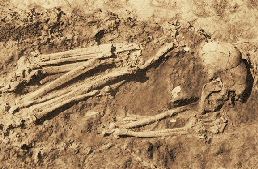
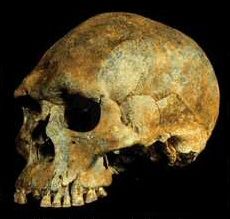
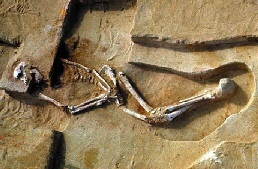

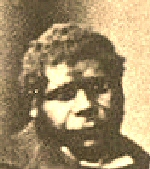
MUNGO MAN
HOBBIT OF FLORES
KOW SWAMP REMAINS
TASMANIAN ABORIGINAL
Aboriginals came to Australia 40-50 thousand years ago. They are of slender build so were given the name Grocile by anthropologists. For a time they lived alongside megafauna. But these large animals went extinct 20-30 thousand years ago. They consisted of wombats as big as a rhino, flightless birds, seven meter long lizards and meat eating kangaroos that would tower over a man. In one theory humans killed off the megafauna. The odd thing is these creatures lived with man for some time then suddenly died out. Bones of megafauna and humans have been found together at some sites. Note, Tasmanian Aboriginals, who could not start fire, but fought over access to it, had a different origin than mainland Aboriginals.
MEGAFAUNA
AUSTRALIAN PREHISTORY
AUSTRALIA'S MYSTERIOUS EVOLUTIONARY ISSUE

There is a mysterious missing-link problem in Australia. Evidence indicates that thousands of years ago Aboriginals lived alongside another man-like bearded "creature" that walked upright. Mungo man was buried with a spear. The "man" according to DNA analysis was not related to Neanderthals nor any race of humans. His skeleton has been dated at 40,000 years to 62,000 years. It is odd that scientists have not been able to date it more precisely. Cover up? Who Knows? His mitochondrial DNA has become extinct. It seems he did not come out of Africa like Australian Aboriginals. If he had come from Africa up to 200,000 years ago he would have the same mitochondrial as modern humans. However, he had fine browridges like us today unlike others contemporary with him when he branched off.
Notably, Kow Swamp skeletons in Victoria show primitive Homo erectus were alive in Australia only 10,000 years ago. Scientists do not want to hear this. Like the Hobbit of Flores in Indonesia these examples undermine current theory published in university textbooks. Critiques of Mungo Man, Kow Swamp skeletons, the Hobbit, Queensland pigmy and Tasmanian Aboriginals are illogical and justifying explanations are unsubstantial. It is sad that no complete skeletons of the pygmy and Tasmanian Aboriginal have been kept in order to compare any differences from other Homo sapiens.
Notably, Kow Swamp skeletons in Victoria show primitive Homo erectus were alive in Australia only 10,000 years ago. Scientists do not want to hear this. Like the Hobbit of Flores in Indonesia these examples undermine current theory published in university textbooks. Critiques of Mungo Man, Kow Swamp skeletons, the Hobbit, Queensland pigmy and Tasmanian Aboriginals are illogical and justifying explanations are unsubstantial. It is sad that no complete skeletons of the pygmy and Tasmanian Aboriginal have been kept in order to compare any differences from other Homo sapiens.
| Australian Sport |
Cricket
Life in Australia revolves around sport. We love all sports and become realy involved in it. The most popular actvities are playing or watching cricket. It is a game played mainly by British Commonwealth countries, a legacy left by the British when the colonial period ended. There are two teams of eleven players with two umpires. Every player in both teams bats, while four or more players in each team also bowl. It is played in a football-sized field. There is a pitch 22 yards long and two yards wide, with a wicket at each end of the pitch. The wicket is composed of three vertical stumps with two bails sitting on top of the stumps. Each bowler bowls six balls at a batsman in an over. There are fast, medium-fast and medium bowlers as well as spinners who impart spin on the ball so that it turns off the pitch. Like baseball there are finer points of the game you don't learn from a book. The rules are learned as you grow up experiencing the game.
Life in Australia revolves around sport. We love all sports and become realy involved in it. The most popular actvities are playing or watching cricket. It is a game played mainly by British Commonwealth countries, a legacy left by the British when the colonial period ended. There are two teams of eleven players with two umpires. Every player in both teams bats, while four or more players in each team also bowl. It is played in a football-sized field. There is a pitch 22 yards long and two yards wide, with a wicket at each end of the pitch. The wicket is composed of three vertical stumps with two bails sitting on top of the stumps. Each bowler bowls six balls at a batsman in an over. There are fast, medium-fast and medium bowlers as well as spinners who impart spin on the ball so that it turns off the pitch. Like baseball there are finer points of the game you don't learn from a book. The rules are learned as you grow up experiencing the game.
Australian Football League
AFL is commonly called Australian rules football. It is claimed to have been invented in NSW by Tom Wills and Henry Harrison after watching Aboriginals play a native game, though its similarity with Gaelic (Irish) football is suiking. It became established in Victoria. Now it is a national game with a national league. An oval ball is kicked and hand passed from player to player. The ball is kicked between goal posts, whereupon sixpoints are scored. There are two other posts set 6.4 metres out from, and inline with, each of the goal post. When the ball goes between these areas, i.e., between a goal post the shorter outside post it is called a "behind" and one point is scored. There are I5 players in each team. Three of these are able to roam the fjield while the others must remain in a zone or mark an opposing player. A player can run with the ball but he must bounce the ball once every I5 metres whilst running. When a player is held by an opponent he must either drop, throw or kick the ball immediately. The objective is to get a "mark". This is achieved by cleanly catching the ball, using the bodies of opponents if necessary. This gives the marker the right to drop kick for goal unirnpeded, or to kick to another player.
AFL is commonly called Australian rules football. It is claimed to have been invented in NSW by Tom Wills and Henry Harrison after watching Aboriginals play a native game, though its similarity with Gaelic (Irish) football is suiking. It became established in Victoria. Now it is a national game with a national league. An oval ball is kicked and hand passed from player to player. The ball is kicked between goal posts, whereupon sixpoints are scored. There are two other posts set 6.4 metres out from, and inline with, each of the goal post. When the ball goes between these areas, i.e., between a goal post the shorter outside post it is called a "behind" and one point is scored. There are I5 players in each team. Three of these are able to roam the fjield while the others must remain in a zone or mark an opposing player. A player can run with the ball but he must bounce the ball once every I5 metres whilst running. When a player is held by an opponent he must either drop, throw or kick the ball immediately. The objective is to get a "mark". This is achieved by cleanly catching the ball, using the bodies of opponents if necessary. This gives the marker the right to drop kick for goal unirnpeded, or to kick to another player.
Rugby Union
Another game that became part of Australian culture, initially played in Britain, is Rugby League. Games of rugby union were played between the British army stationed in Australia and ships' crews. The Sydney University Club was formed in I864. By 1874 a Sydney Metropolitan competition was established. A Queensland competition was created in I883. Players from both competitions were selected to play against a visiting British side in I899. Australian and New Zealand played a test in 1903. Rugby league broke away from union in Australia in 1908. The same year an Australian union team toured the United Kingdom, Ireland and North America. In 1931 the Governor General of New Zealand, Lord Bledisloe, donated a trophy to be known as the Bledisloe Cup, which has been contested annually between Australia and New Zealand. An australian national rugby union was established in I949 and a World Cup in I987.
Another game that became part of Australian culture, initially played in Britain, is Rugby League. Games of rugby union were played between the British army stationed in Australia and ships' crews. The Sydney University Club was formed in I864. By 1874 a Sydney Metropolitan competition was established. A Queensland competition was created in I883. Players from both competitions were selected to play against a visiting British side in I899. Australian and New Zealand played a test in 1903. Rugby league broke away from union in Australia in 1908. The same year an Australian union team toured the United Kingdom, Ireland and North America. In 1931 the Governor General of New Zealand, Lord Bledisloe, donated a trophy to be known as the Bledisloe Cup, which has been contested annually between Australia and New Zealand. An australian national rugby union was established in I949 and a World Cup in I987.
Motor Sport
Australia has motor car world champions Jack Brabham and Alan Jones in Formula One, as well as Wayne Gardner, Mike Doohan and Casey Stoner in motorcycle Grand Prix.
Australia has motor car world champions Jack Brabham and Alan Jones in Formula One, as well as Wayne Gardner, Mike Doohan and Casey Stoner in motorcycle Grand Prix.
Cricket Don Bradman
Don Bradman is deemed to be the greatest cricketer ever to have lived. He had a batting average of 99 runs per innings.
Don Bradman is deemed to be the greatest cricketer ever to have lived. He had a batting average of 99 runs per innings.
Australian Rules Football
A brand of football played by Australians named after the Australian Football League (AFL). It was invented by Tom Wills and Henry Harrison from an Aboriginal game, Mangrook. It similarity to Irish footbal is strong.
A brand of football played by Australians named after the Australian Football League (AFL). It was invented by Tom Wills and Henry Harrison from an Aboriginal game, Mangrook. It similarity to Irish footbal is strong.
America's Cup
Australia ended the US hold on the America's Cup in 1983, the race series being won by Australia II with its controversial winded keel,
Australia ended the US hold on the America's Cup in 1983, the race series being won by Australia II with its controversial winded keel,
Olympic Gold Medals
Dawn Fraser won a gold medal in the same event in three consecutive Olympic Games.
Dawn Fraser won a gold medal in the same event in three consecutive Olympic Games.
Tennis Grand Slams
Rod Laver won the Tennis Grand Slam twice.
Rod Laver won the Tennis Grand Slam twice.
Phar Lap
Australia had a great race horsehat won 37 races from 51 starts carrying record weight.
Australia had a great race horsehat won 37 races from 51 starts carrying record weight.
AUSTRALIAN FIRSTS
Rugby League
New South Wales and Queensland are the prime regions for Rugby League. It has become an important aspect of Australian culture. In 1895 the Northem Union broke away from the Rugby Football Union in England. The split was caused by a difference of opinion over pay. The new league wrote newrules of play. Though spectators had to pay to watch the game the new league became very popular. Because the Australian football authorities remained avid supporters of union remaining amateur, players became disheartened. Some of the best union players were signed up by league clubs which could offer good remuneration, particularly when players suffered injuries. In Australia the league comprised mostlv New South Wales clubs, so it was called the New South Wales Rugby League It became a truly national league in the 1990s when a team in Queensland was added. Now teams from Queensland and Victoria play in the league.
New South Wales and Queensland are the prime regions for Rugby League. It has become an important aspect of Australian culture. In 1895 the Northem Union broke away from the Rugby Football Union in England. The split was caused by a difference of opinion over pay. The new league wrote newrules of play. Though spectators had to pay to watch the game the new league became very popular. Because the Australian football authorities remained avid supporters of union remaining amateur, players became disheartened. Some of the best union players were signed up by league clubs which could offer good remuneration, particularly when players suffered injuries. In Australia the league comprised mostlv New South Wales clubs, so it was called the New South Wales Rugby League It became a truly national league in the 1990s when a team in Queensland was added. Now teams from Queensland and Victoria play in the league.
Surf Life Saving
The Australian identity is linked to the beach and surf. Although Australia is a place where the bush is central to its culture, most Australians live near the coasts. It is the image gf Bronzed Aussies swimming in rolling waves on white beaches that is the Australian identity to people overseas. When Australians want to relax they head for the beach. There are no private beaches in this country. All are open to the public. Australias first official surf lfesaving club - the fiirst in the world - was founded at Bondi Beach, Sydney, in I906. For a hundred years Australia has had surf lfie saving clubs keeping our beaches safe. Over half a million people have been rescued with a million others receiving first aid. Surf lifesaving Australia has 130,000 members with nearly 40,000 being on duty patrolling our beaches. More than 40,000 nippers (children) are being trained at anyone time. Trained surf lfesavers regularly visit schools.
The Australian identity is linked to the beach and surf. Although Australia is a place where the bush is central to its culture, most Australians live near the coasts. It is the image gf Bronzed Aussies swimming in rolling waves on white beaches that is the Australian identity to people overseas. When Australians want to relax they head for the beach. There are no private beaches in this country. All are open to the public. Australias first official surf lfesaving club - the fiirst in the world - was founded at Bondi Beach, Sydney, in I906. For a hundred years Australia has had surf lfie saving clubs keeping our beaches safe. Over half a million people have been rescued with a million others receiving first aid. Surf lifesaving Australia has 130,000 members with nearly 40,000 being on duty patrolling our beaches. More than 40,000 nippers (children) are being trained at anyone time. Trained surf lfesavers regularly visit schools.
First Ski Club
Australia was the first country in the world to have a snow ski club. The Kiandra club had regular downhill skiing competitions.
Australia was the first country in the world to have a snow ski club. The Kiandra club had regular downhill skiing competitions.
Australian Crawl (freestyle)
Overarm swimming beacme widely used in Australia in the 1900s.
Overarm swimming beacme widely used in Australia in the 1900s.
Tote (totlisator)
This sytem of betting where incoming bets placed on racehorses product racing odds automatically was developed in 1913 by George Julius.
This sytem of betting where incoming bets placed on racehorses product racing odds automatically was developed in 1913 by George Julius.
Polocrosse
Australia created the game of polocrosse in 1938.
Australia created the game of polocrosse in 1938.
Race Cam
Geoff Healey was the first use cameras on race cars in 1979..
Geoff Healey was the first use cameras on race cars in 1979..
Winged Keel
This adaptation which was responsible for Australia's win of the America's Cup was attached to Australia II by Ben Lexcen.
This adaptation which was responsible for Australia's win of the America's Cup was attached to Australia II by Ben Lexcen.
The most common word heard by visitors to Australia is Gday (Gidday). This is short for "Good Day" and is usually followed by Mate, as in G'day mate. G'day is sometimes followed by Ow yer gowin?, which of course means "how are you going?" The "r" is soft in Australian. For example, motor car is pronounced "mota caa" by Australians.
Australian English is called strine because the word Australian sounds like strine - the way Australians pronounce it with closed teeth and through the nose. Remember we speak with closed teeth to keep the flies out - hahaha!. This type of Australian is spoken by the person in the street, particularly in the bush, but also by people in major cities.
Television anchors, radio announcers and so called "educated" Australians adopt the English "posh twang". They are under the illusion that people will believe them to be English. But they sound neither Australian nor English. Visiting English and ordinary Australians look upon such people as cultural oddities who don't accept who they are. If I hear Australians acting posh I steer well clear of them because I know they are false. If they love the English class system so much as to copy the upper-class accent they should live in England. Remember English courtiers adopted this odd way of speaking to placate an English king who had a lisp. Note, the posh English is not so popular today with people in England. Most adopt the London accent if they want to make out they had auspicious origins. Why some Australians want to mimic posh English is beyond me. Perhaps they lost something in their youth and they are still looking for it.
Australian English is called strine because the word Australian sounds like strine - the way Australians pronounce it with closed teeth and through the nose. Remember we speak with closed teeth to keep the flies out - hahaha!. This type of Australian is spoken by the person in the street, particularly in the bush, but also by people in major cities.
Television anchors, radio announcers and so called "educated" Australians adopt the English "posh twang". They are under the illusion that people will believe them to be English. But they sound neither Australian nor English. Visiting English and ordinary Australians look upon such people as cultural oddities who don't accept who they are. If I hear Australians acting posh I steer well clear of them because I know they are false. If they love the English class system so much as to copy the upper-class accent they should live in England. Remember English courtiers adopted this odd way of speaking to placate an English king who had a lisp. Note, the posh English is not so popular today with people in England. Most adopt the London accent if they want to make out they had auspicious origins. Why some Australians want to mimic posh English is beyond me. Perhaps they lost something in their youth and they are still looking for it.
The meaning of Australian words is really quite straightforward. The bush just means in the country. Outback means the same thing. Misunderstanding does arise, however. When an Australian is having a sickie he isn't being ill. He actually is very well but is taking a day off work, with pay, to go to the football, for example.
To Americans New Iealanders sound like Australians. An Australian can pick a New Zealander in any crowd. New Zealanders will always say sux instead of the numeral six.
Though many deny it, the Australian accent is derived from cockney, mixed with Irish. This is the case because the great majority of first arrivals were cockney and Irish. Australia probably has fewer dialects than any other nation with people from Perth to Cairns sounding the same.
To Americans New Iealanders sound like Australians. An Australian can pick a New Zealander in any crowd. New Zealanders will always say sux instead of the numeral six.
Though many deny it, the Australian accent is derived from cockney, mixed with Irish. This is the case because the great majority of first arrivals were cockney and Irish. Australia probably has fewer dialects than any other nation with people from Perth to Cairns sounding the same.
While Australians reach for their Macquarie Dictionary to find the Aussie meaning of things, the English Oxford Australian Dictionary also covers the Australian topic very well - Australians have ruined the language!
Visitors often mispronounce the names of towns. With many names coming from local Aboriginal even Australians have trouble with towns in other states. Have a go at these: Nuriootpa, Woolgoolga. Willabillongado. Wyalkatchem, Widgiemooltha.
Australians can be very parochial and will verbally attack any visitor who criticizes an Aussie's home town. Even though the Australian may point out the bad points of the town to newcomers. Like in the US many towns have the same names as British towns. That is an accident of history: new immigrants named the place where they finally settled after their original home town.
Visitors often mispronounce the names of towns. With many names coming from local Aboriginal even Australians have trouble with towns in other states. Have a go at these: Nuriootpa, Woolgoolga. Willabillongado. Wyalkatchem, Widgiemooltha.
Australians can be very parochial and will verbally attack any visitor who criticizes an Aussie's home town. Even though the Australian may point out the bad points of the town to newcomers. Like in the US many towns have the same names as British towns. That is an accident of history: new immigrants named the place where they finally settled after their original home town.

ART/CULTURAL EVENTS, ACTIVITIES, VENUES & RESOURCES














